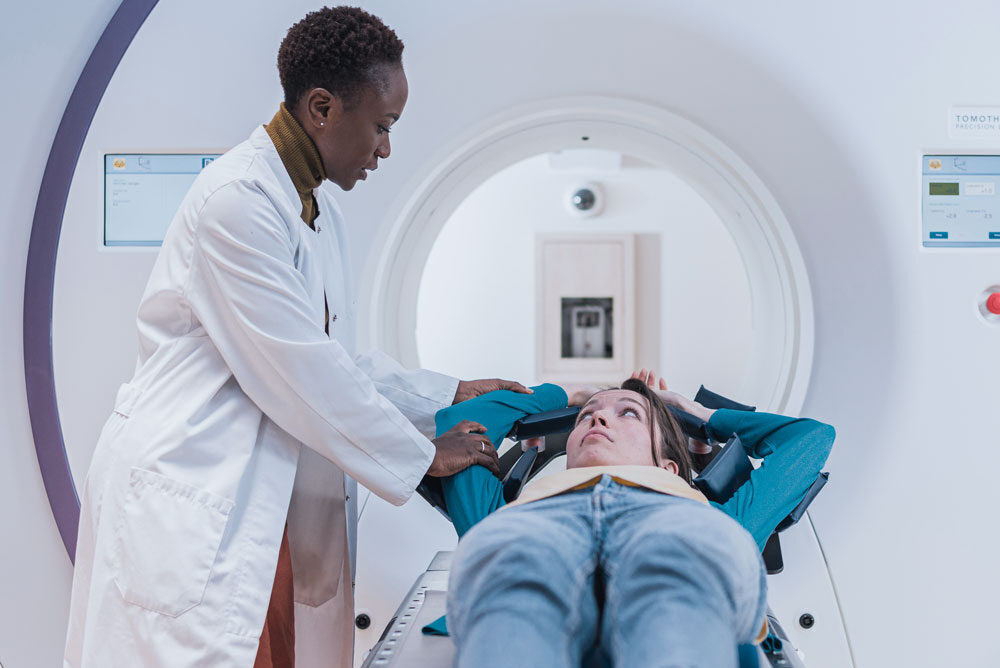- News ›
- What Was The First Condition Treated Using Gamma Knife?
What Was The First Condition Treated Using Gamma Knife?

Of the many different neurosurgical and neurological treatment interventions available, one of the most versatile and most useful is that of Gamma Knife surgery.
Unlike other forms of surgery, Gamma Knife does not require any incisions, has far lower recovery times and is highly accurate.
It was designed by the late Swedish radiotherapy pioneer Lars Leksell, who famously noted that there is no tool that is too refined for use on the brain.
This philosophy led to him spending his entire life refining the Gamma Knife to make it more versatile and more accurate, which is why it is still the leading stereotactic radiosurgical treatment available today.
It was first presented in a 1951 paper, and just two years later it would be used to successfully treat two patients and provide lifelong relief from a condition that manifests in episodes of sharp pain.
The stereotactic frame was first invented in 1908, but it was primarily used for the production of brain atlases for the first few decades of its existence.
The first successful stereotactic treatment was by Martin Kirschner in 1933, where the cartesian frame was used as part of an electrode treatment for trigeminal neuralgia. It worked, but it was as intrusive as existing surgical methods.
Lars Leksell took the stereotactic frame and refined it by using a reference system based on polar coordinates, allowing it to be more versatile when used on the brain.
Mr Leksell, a neurosurgical specialist, wanted to create a form of bloodless surgery that would use mechanically guided tools to guide precise surgical interventions.
In some respects, this was based on a desire for more elegant approaches to surgery, whilst in other respects it was an aversion to the invasive forms of brain surgery that were de rigueur when he was actively practising.
The stereotactic frame allowed him to accurately identify where the tumour was located, drain the cyst and inject the tumour with a radioactive liquid in order to slow its growth.
The treatment was effective and has been used in the decades since, but Mr Leksell wished to advance the concept further and find a way to identify and treat tumours and lesions without any invasive treatment whatsoever.
Both patients had been diagnosed with trigeminal neuralgia, a rare long-term pain disorder that can cause episodes of severe pain that are triggered by light contact with the affected part of the face.
It is caused by the trigeminal nerve, and the primary form of treatment at the time is a surgical operation that creates an incision or ablation at a specific point to stop pain signals from being transmitted. Mr Kirschner had first used the stereotactic frame for this purpose in 1933.
For Mr Leksell, this was the perfect test of the Gamma Knife; it was a procedure that required precise ablation, something that the Gamma Knife was able to provide using X-rays, gamma rays or ultrasound.
This particular case used X-rays, and following the procedure, both patients were pain free, and neither reported any further pain episodes even after a follow-up two decades later. As far as has been reported, they spent their lives free of pain.
Originally, he wanted to use a synchrocyclotron, a form of proton accelerator that could theoretically allow him to replace X-rays with proton beams. Unfortunately, this system turned out to be too complicated for use in medical procedures.
This guided him to an alternative in the form of cobalt-60, which produced the gamma rays which gave Gamma Knife its eventual name when the system was perfected in 1967.
He also focused on the versatility of radiosurgery, aiming to use the system as much as possible as a replacement for more invasive forms of neurosurgery, something that has ensure the Gamma Knife has remained viable and vital into the 21st century.
Unlike other forms of surgery, Gamma Knife does not require any incisions, has far lower recovery times and is highly accurate.
It was designed by the late Swedish radiotherapy pioneer Lars Leksell, who famously noted that there is no tool that is too refined for use on the brain.
This philosophy led to him spending his entire life refining the Gamma Knife to make it more versatile and more accurate, which is why it is still the leading stereotactic radiosurgical treatment available today.
It was first presented in a 1951 paper, and just two years later it would be used to successfully treat two patients and provide lifelong relief from a condition that manifests in episodes of sharp pain.
Developing The Gamma Knife
The Gamma Knife was the culmination of multiple discoveries in the field of neurosurgery and radiation therapy in the 1930s and 1940s.The stereotactic frame was first invented in 1908, but it was primarily used for the production of brain atlases for the first few decades of its existence.
The first successful stereotactic treatment was by Martin Kirschner in 1933, where the cartesian frame was used as part of an electrode treatment for trigeminal neuralgia. It worked, but it was as intrusive as existing surgical methods.
Lars Leksell took the stereotactic frame and refined it by using a reference system based on polar coordinates, allowing it to be more versatile when used on the brain.
Mr Leksell, a neurosurgical specialist, wanted to create a form of bloodless surgery that would use mechanically guided tools to guide precise surgical interventions.
In some respects, this was based on a desire for more elegant approaches to surgery, whilst in other respects it was an aversion to the invasive forms of brain surgery that were de rigueur when he was actively practising.
The First Stereotactic Treatment
Mr Leksell’s first patient treated using the stereotactic frame was a 40-year-old man affected by a tumour pressing against his optic nerve.The stereotactic frame allowed him to accurately identify where the tumour was located, drain the cyst and inject the tumour with a radioactive liquid in order to slow its growth.
The treatment was effective and has been used in the decades since, but Mr Leksell wished to advance the concept further and find a way to identify and treat tumours and lesions without any invasive treatment whatsoever.
The First Two Gamma Knife Treatments
In 1953, following experiments on the most appropriate form of radiation before the development of cobalt-60, Lars Leksell was responsible for the first two treatments using stereotactic radiosurgery and changed the treatment of brain conditions in the process.Both patients had been diagnosed with trigeminal neuralgia, a rare long-term pain disorder that can cause episodes of severe pain that are triggered by light contact with the affected part of the face.
It is caused by the trigeminal nerve, and the primary form of treatment at the time is a surgical operation that creates an incision or ablation at a specific point to stop pain signals from being transmitted. Mr Kirschner had first used the stereotactic frame for this purpose in 1933.
For Mr Leksell, this was the perfect test of the Gamma Knife; it was a procedure that required precise ablation, something that the Gamma Knife was able to provide using X-rays, gamma rays or ultrasound.
This particular case used X-rays, and following the procedure, both patients were pain free, and neither reported any further pain episodes even after a follow-up two decades later. As far as has been reported, they spent their lives free of pain.
What Happened Next?
Following this, Lars Leksell dedicated much of the rest of his life to developing and evolving the Gamma Knife system. In particular, he was focused on how the system could use a more advanced and more accurate form of radiation as a basis for the treatment.Originally, he wanted to use a synchrocyclotron, a form of proton accelerator that could theoretically allow him to replace X-rays with proton beams. Unfortunately, this system turned out to be too complicated for use in medical procedures.
This guided him to an alternative in the form of cobalt-60, which produced the gamma rays which gave Gamma Knife its eventual name when the system was perfected in 1967.
He also focused on the versatility of radiosurgery, aiming to use the system as much as possible as a replacement for more invasive forms of neurosurgery, something that has ensure the Gamma Knife has remained viable and vital into the 21st century.

